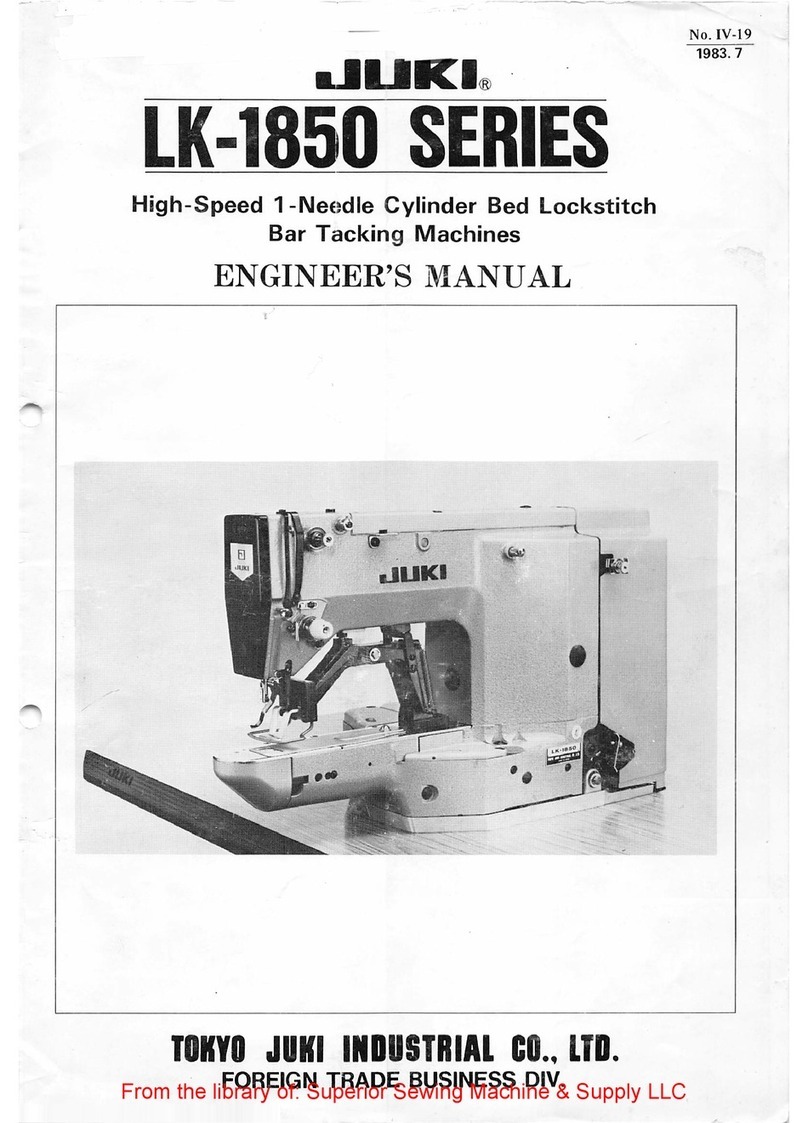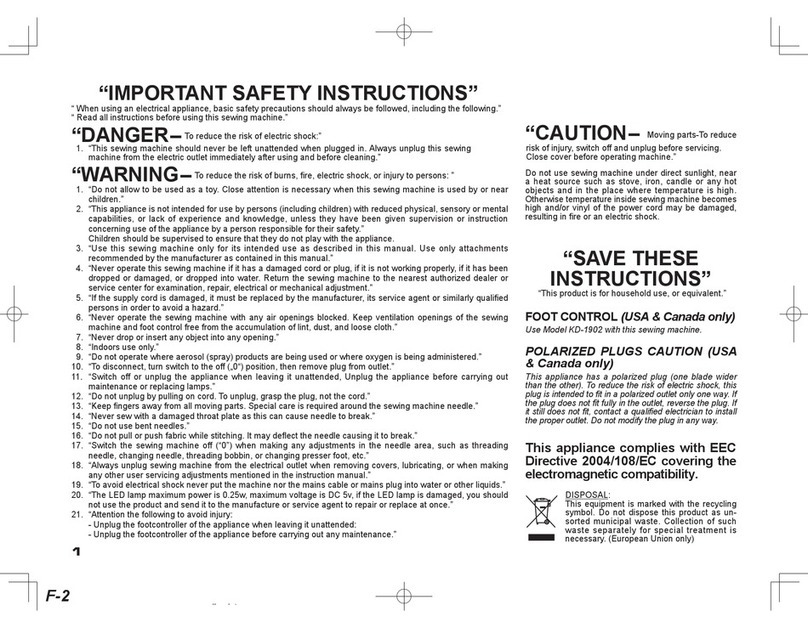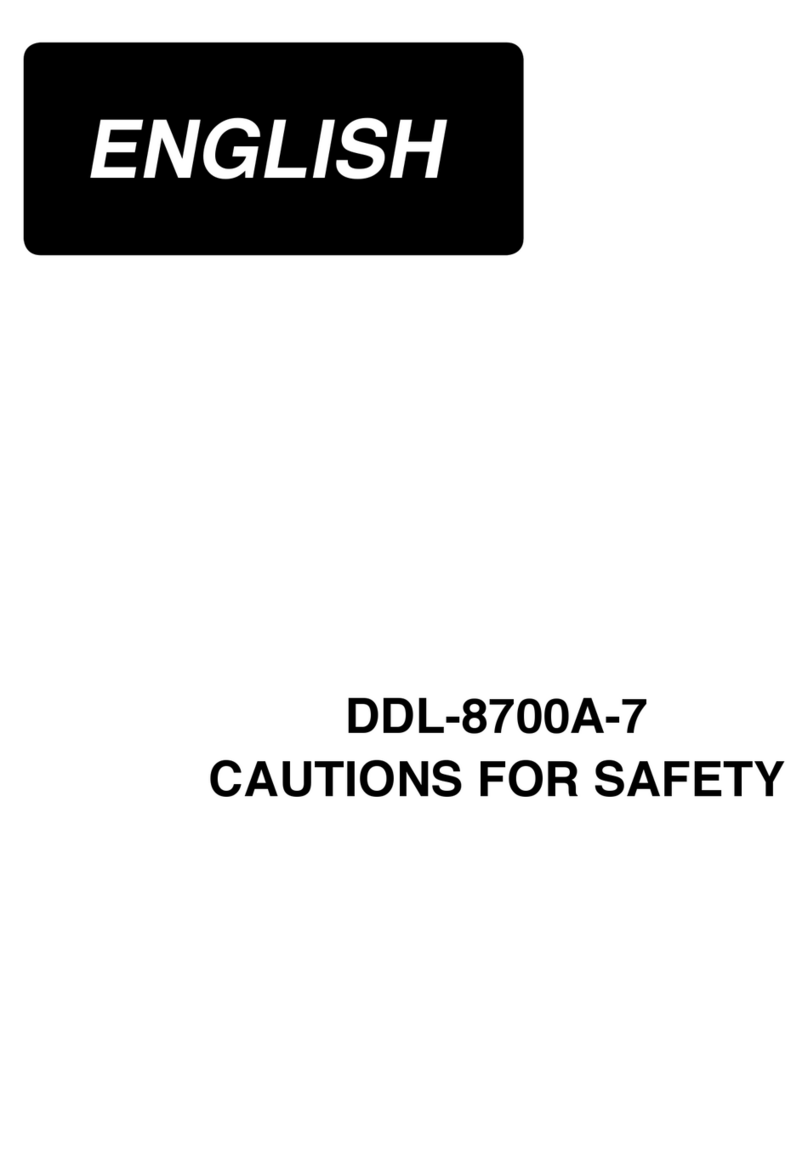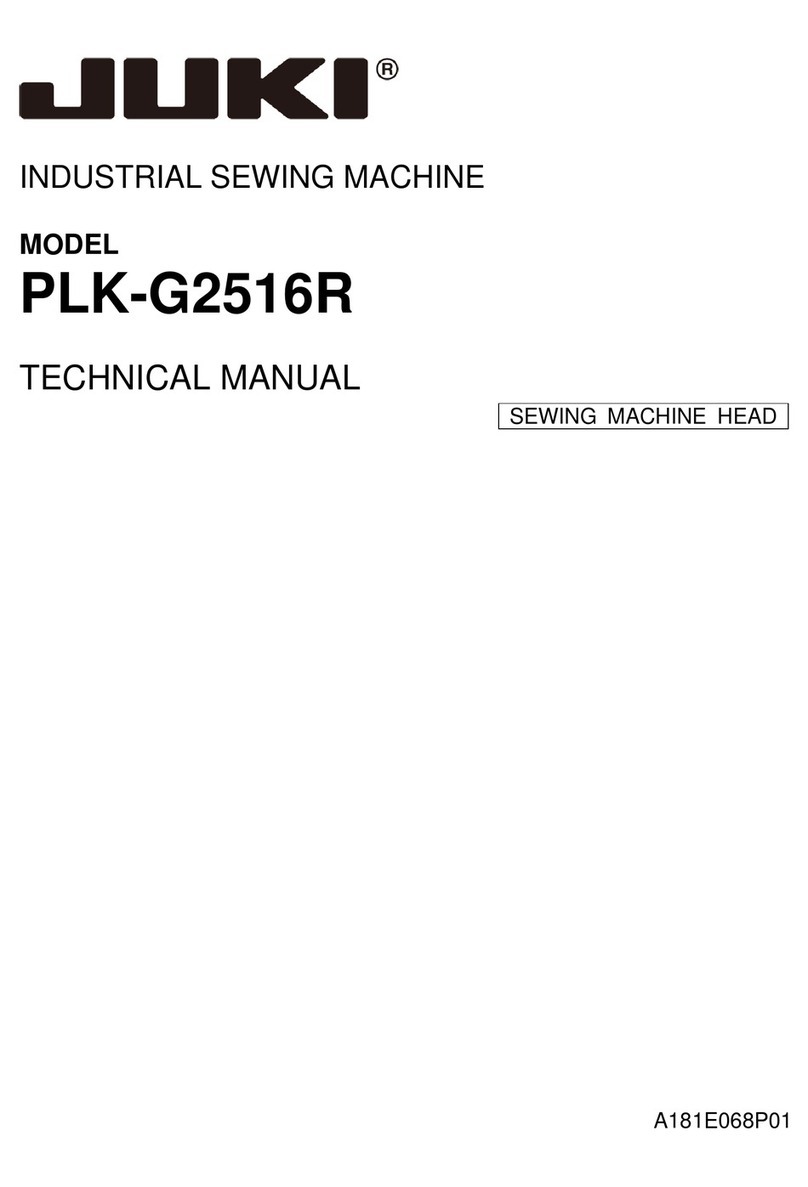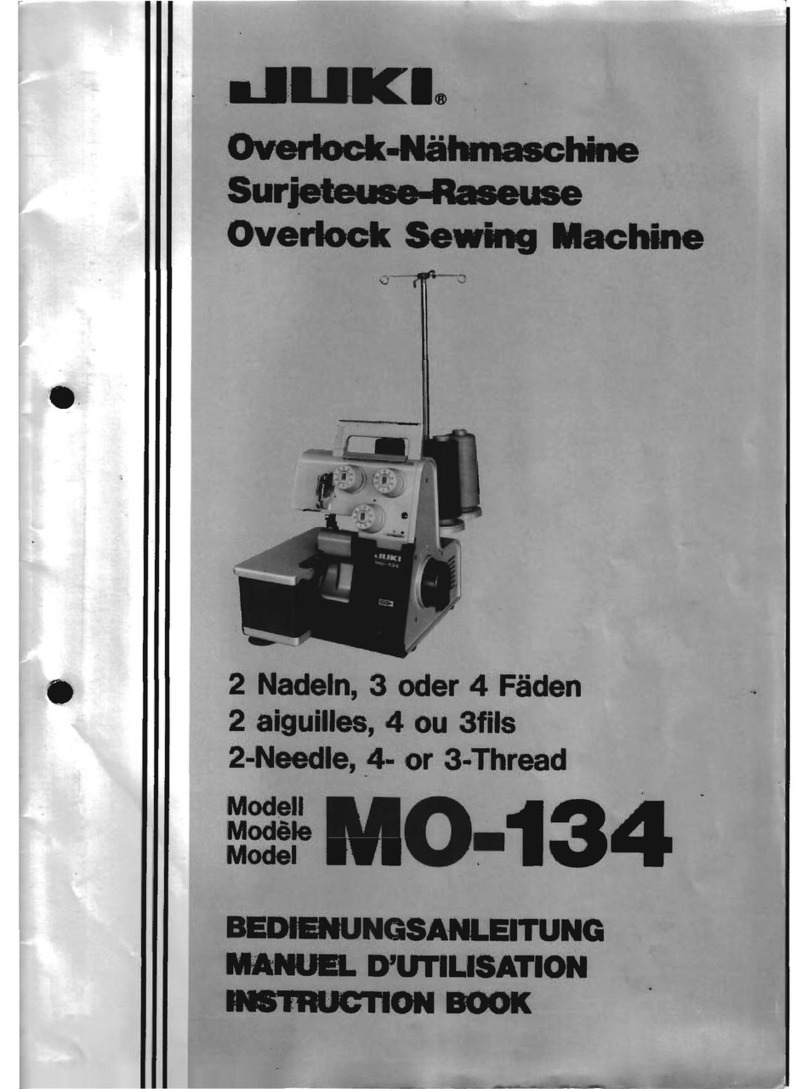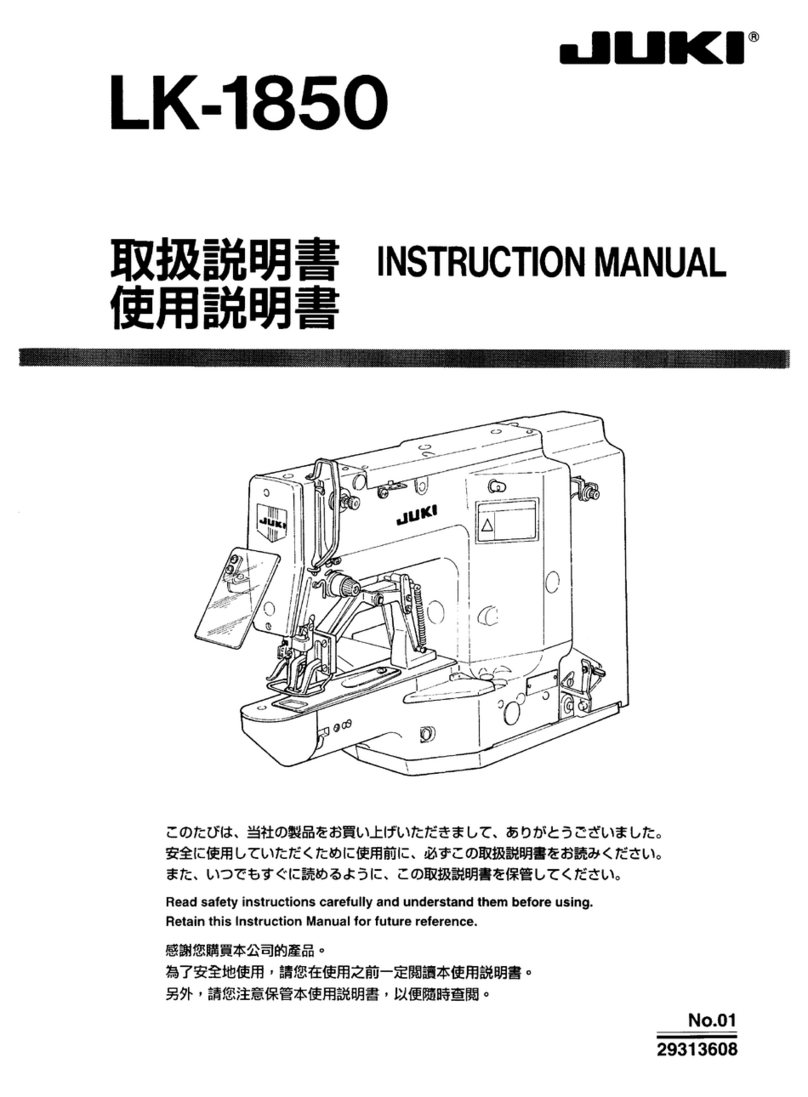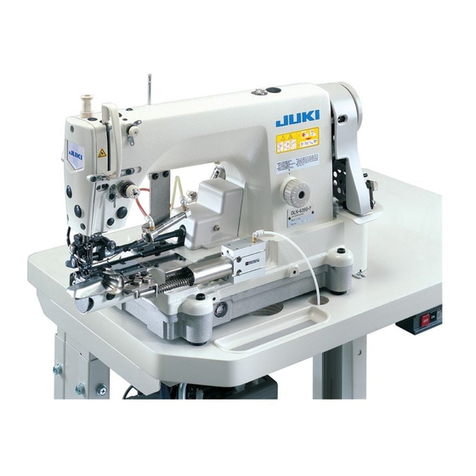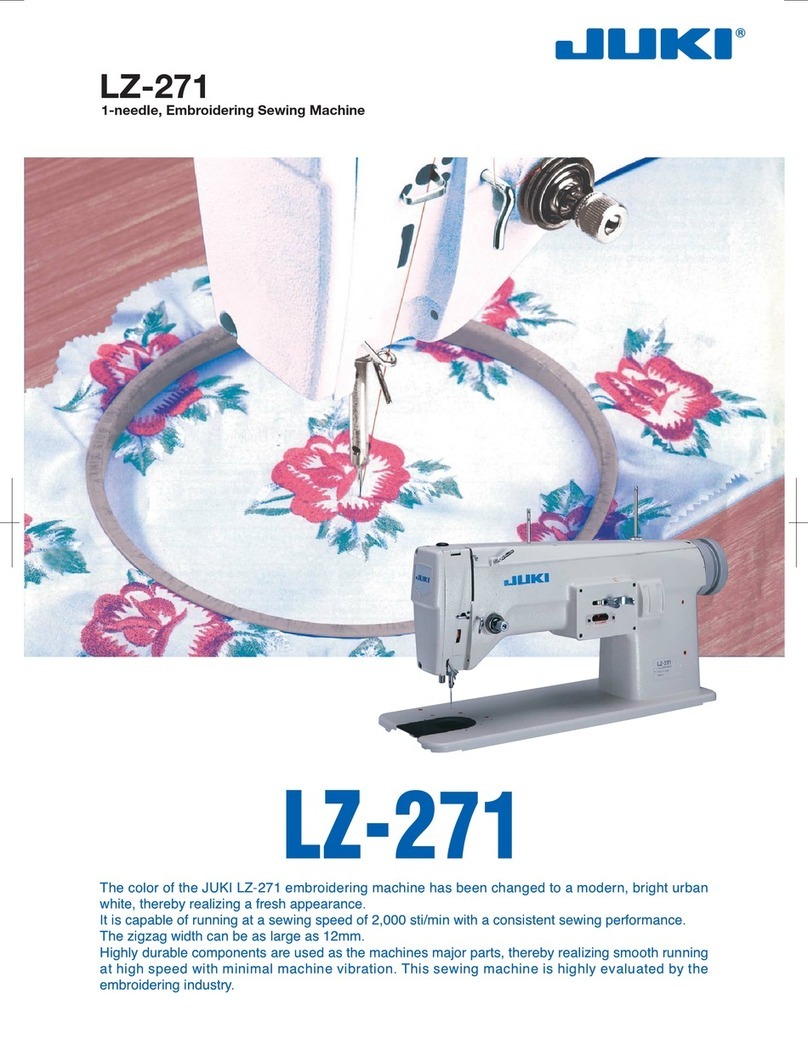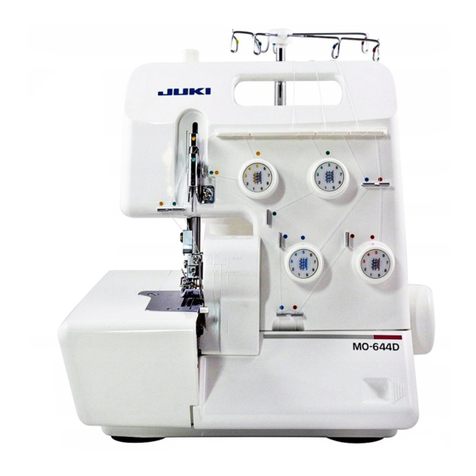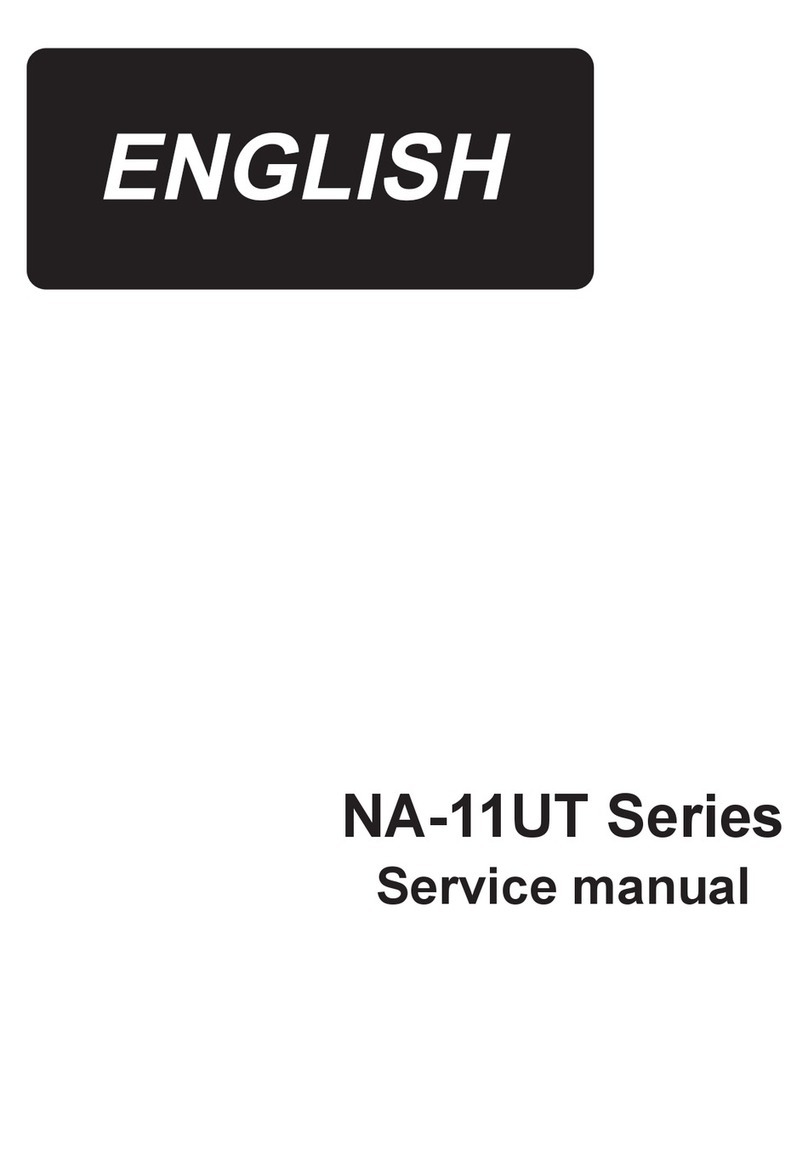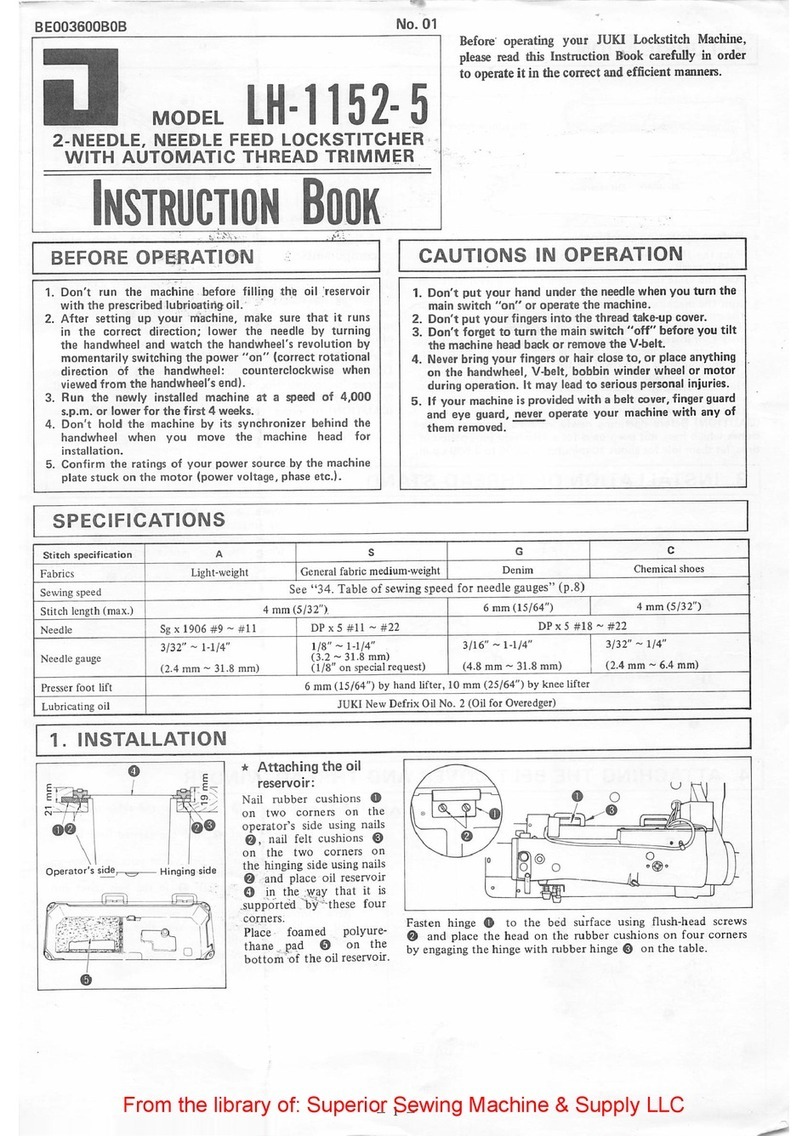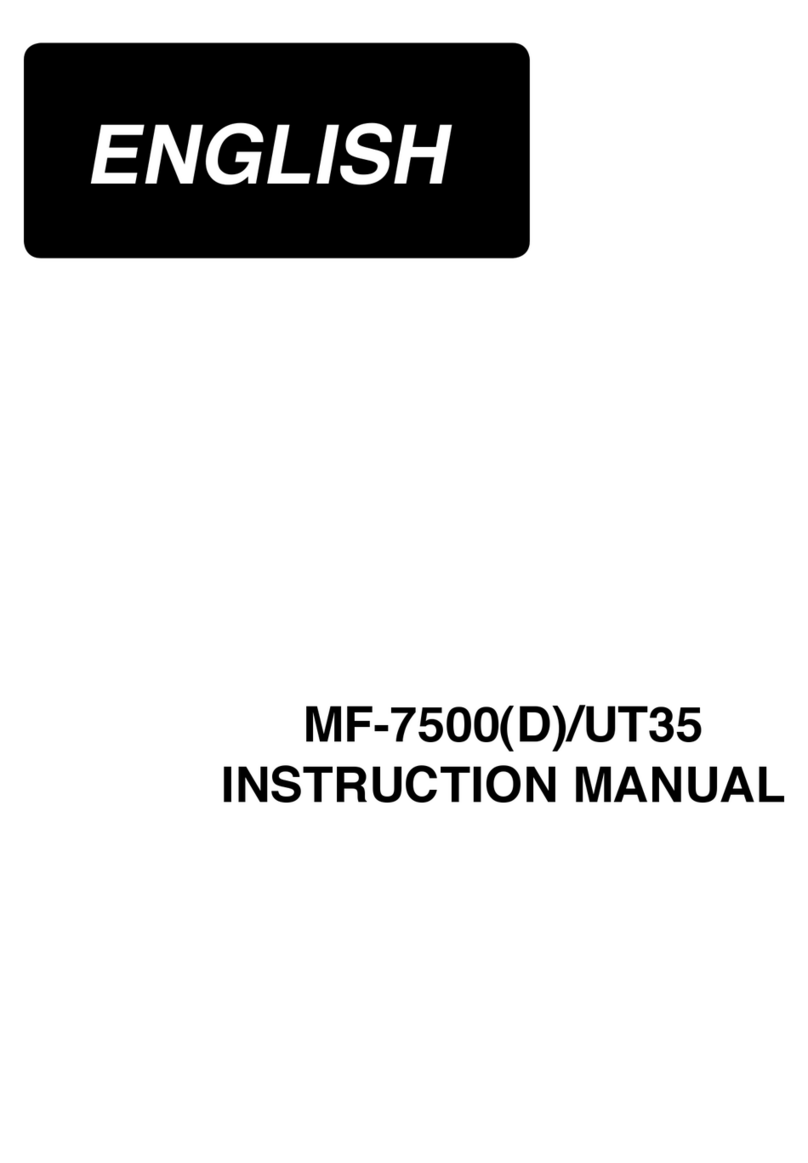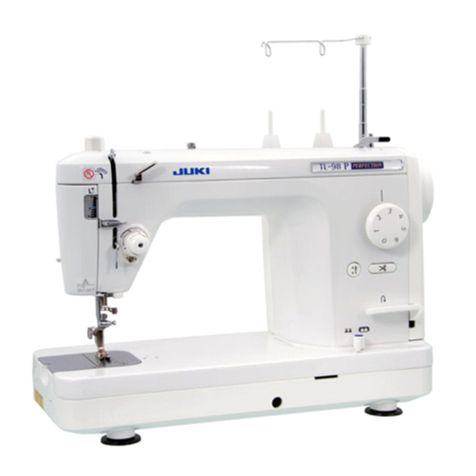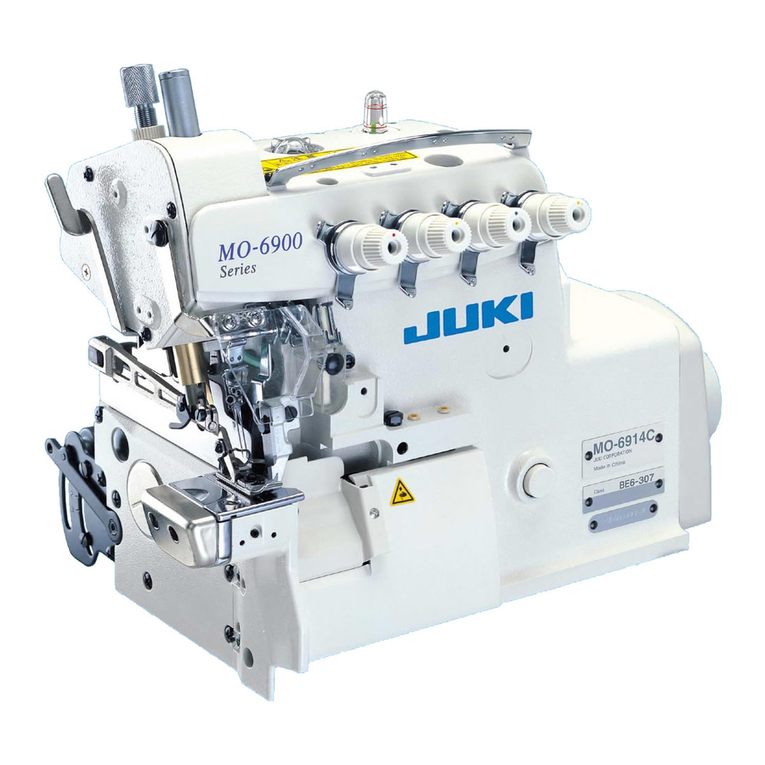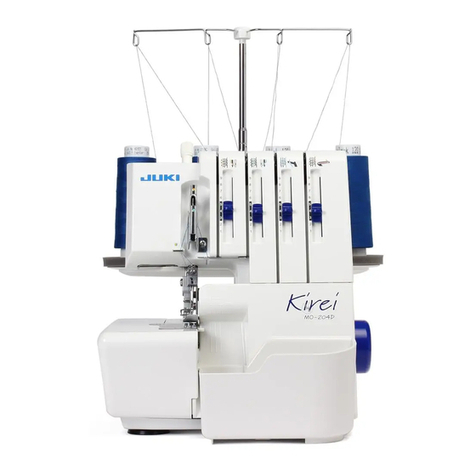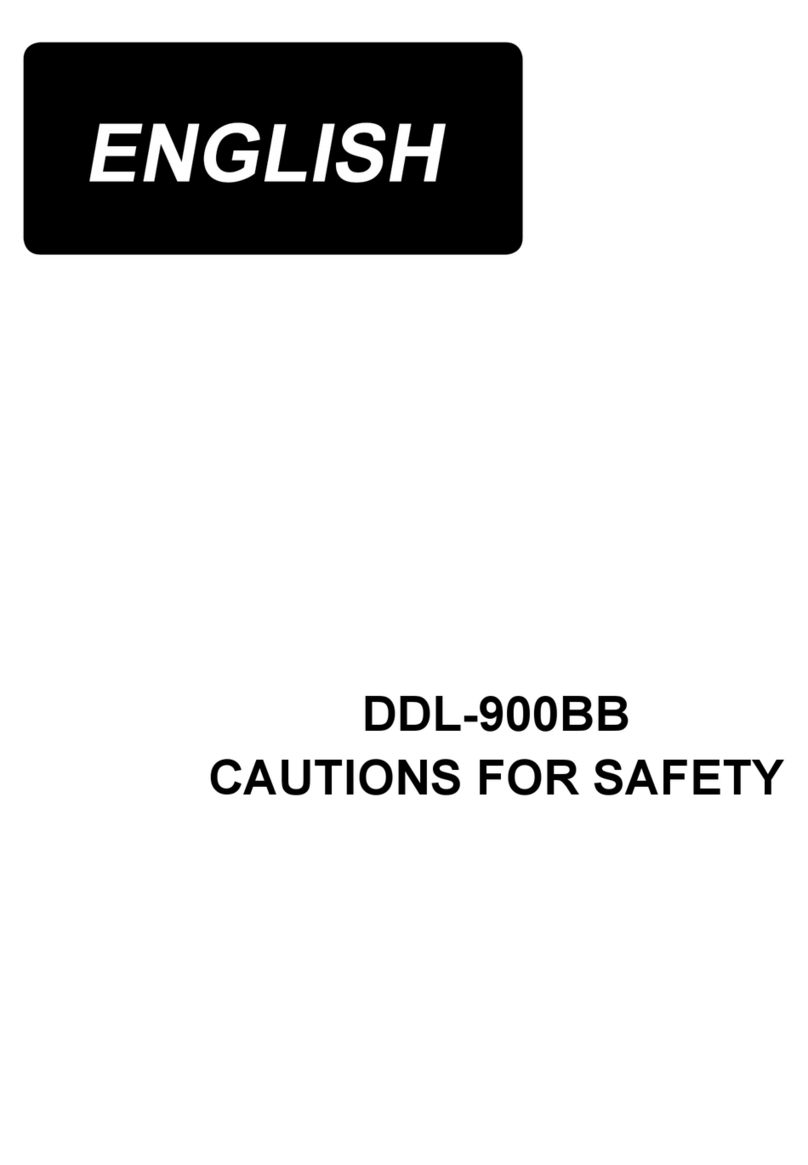8.
ATTACHING
THE
CHAIN
Hook S-shaped hook 0into the hole in the tip of
starting lever O , and
attach
chain O to
the
S-
shaped
hook.
9.
LUBRICATION
Supply
Supply
1. Lubricate the machine once a day from lubrication hole O . The
machine can also be lubricated by removingrubber plug O .
2. Use Juki New Defrix Oil No. 2 or spindle oil No. 2 as the lubricating
oil.
* When using
the
thread
guide (optionally available)
Supply silicone oil through silicone oil lubricating hole 0 when using
thread guide
0,
At this time, check
that
the
thread which has passed through thread
guide 0 has
the
silicone oil
on
it.
10.
OPERATING
THE
SEWING
MACHINE
Operate
the
sewing
machine
in
the
following
procedure:
1.
Turn
on
the
power
switch.
2. Depress the starting pedal a little, and the work clamp foot will come down. When you want to make the work clamp foot
go
up,
release
the
pedal.
3. Further depress the pedal, and
the
sewing machine starts bar-tacking. Immediately after the sewing machine starts bar-tacking,
release
the
pedal.
4. When the machine has completed the specified bar-tacking cycle, the work clamp foot will automatically
go*
up, and the
needle
and
bobbin
threads
are
trimmed
before
the
machine
stops.
(Cautions) 1. Be sure to
release
the pedal as soon as the machinestarts bar-tacking, or
else
the
machine will
not
stop
at
the
predetermined point.
2. If you fail to depress the pedal sufficiently, the machine may stop at the
first stitch. In this case, depress
the
pedal gain sufficiently.
3. If
the
machine will not start evenwhen you depress it strong enough, turn
of the power switch, and remove the belt cover. Then turn changeover
pulley
0
(Knurled
part)
in
the
arrowed
direction
of
low-spe^
pulley
0
4. This
sewing
machine may run rather unsmoothly on a cold morning
because it uses grease for the lubrication of several parts. In such a case,
allow
the
machineto idlefor 5 or 6 times before starting
the
work.
^ To
operate
the
sewing maclne manually;
Turn off the power switch, remove the upper end of spring 0 , give low-speed pulley
0 two turns in the arrowed direction and the work clamp foot willcomedown. Then
depress
the
starting pedal, and
the
machine can be run manually.
11.
MATERIALS
AND
NEEDLES
TO
BE
USED
Material
Needle
Needle plate needle hole guide
Class
or
work
Extra
light-weight
material
#11
(DPx5)
D2426282C00
Knit
goods,
tricot
wear
Synthetic
fiber
material
#14
(DPx5, SUPER needle)
B2426280000
(standard)
Men's
suits.
Ladies'
wear
Medium-weight
material
#16(DPx5)
B2426280000
(standard)
Men's
suits.
Ladies'
wear
Heavy-weight
material
#18(DPx5)
B242628O0OO(standard)
Working
wear,
overcoats
-4-

